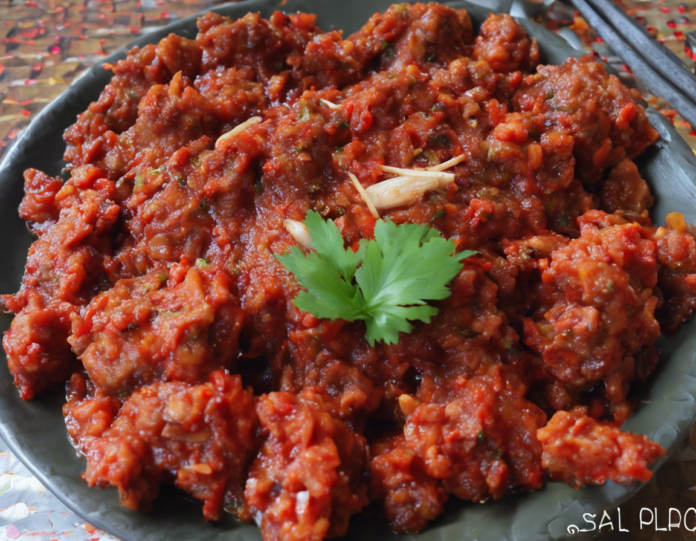Introduction
Spicy, tangy, and bursting with flavor, sambal has been a staple in Southeast Asian cuisine for centuries. This chili-based condiment has evolved over time, adapting to different regions, ingredients, and preferences. In recent years, a new wave of sambal, often referred to as Sambal 2.0, has been making waves in the culinary world. Let’s delve into the history, ingredients, variations, and modern interpretations of sambal.
A Brief History of Sambal
Sambal traces its roots back to the Indonesian archipelago, where it was traditionally made using a mortar and pestle to grind chilies, salt, and other seasonings. Over time, sambal spread beyond Indonesia and became a beloved condiment in countries like Malaysia, Singapore, Thailand, and the Philippines. Each region put its twist on sambal, incorporating local ingredients and flavors.
Key Ingredients in Sambal
The core ingredient in sambal is chili peppers, which can range from mild to fiery hot, depending on personal preferences. Other essential components of sambal include garlic, shallots, shrimp paste, tamarind, lemongrass, and vinegar. These ingredients work together to create a complex flavor profile that is spicy, sour, salty, and savory all at once.
Traditional Variations of Sambal
- Sambal Oelek: A basic sambal made with fresh red chilies, vinegar, and salt. It has a chunky texture and a vibrant, fiery flavor.
- Sambal Belacan: A Malaysian variation that incorporates shrimp paste (belacan) for an umami punch. It is often used in dishes like nasi lemak and sambal udang.
- Sambal Matah: Hailing from Bali, this sambal features shallots, lemongrass, and kaffir lime for a fresh, zesty taste. It is typically served with grilled meats and seafood.
- Sambal Kecap: A sweet and savory Indonesian sambal that includes soy sauce, palm sugar, and lime juice. It pairs well with fried tofu and tempeh.
Sambal 2.0: The Modern Twist
In recent years, chefs and home cooks have been experimenting with sambal, creating innovative variations that push the boundaries of traditional flavors. Sambal 2.0 incorporates non-traditional ingredients, techniques, and pairings to create unique and exciting flavor profiles.
Key Characteristics of Sambal 2.0
- Artisanal Ingredients: Chefs are sourcing high-quality, locally grown chilies and other ingredients to elevate the flavor of sambal.
- Fusion Flavors: Sambal is being infused with ingredients from different cuisines, such as Japanese yuzu, Mexican chipotle, and Middle Eastern sumac.
- Texture Play: Chefs are experimenting with different textures, from smooth and velvety to chunky and crunchy, to add depth to sambal dishes.
- Healthy Twists: Sambal 2.0 recipes often focus on healthier alternatives, such as using less oil, sugar, and salt while maximizing flavor.
How to Use Sambal 2.0 in Cooking
- Marinades: Use sambal 2.0 as a spicy marinade for meats, seafood, tofu, and vegetables.
- Condiment: Serve sambal 2.0 as a condiment alongside rice, noodles, grilled dishes, and fried snacks.
- Dipping Sauce: Mix sambal 2.0 with yogurt, sour cream, or mayo for a zesty dipping sauce for fries, wings, and veggies.
- Stir-Fries: Add sambal 2.0 to stir-fries and noodle dishes for an extra kick of flavor.
Frequently Asked Questions (FAQs)
- Is sambal the same as sriracha?
-
While both sambal and sriracha are spicy condiments, they have different ingredients and origins. Sambal is typically made with chili peppers, while sriracha includes garlic, sugar, and vinegar.
-
Is sambal vegetarian-friendly?
-
Sambal can be vegetarian-friendly if it does not contain shrimp paste or other animal products. Some sambal recipes are entirely plant-based.
-
How long does sambal last in the fridge?
-
Homemade sambal can last for several weeks when stored in an airtight container in the fridge. Commercial sambal products may have a longer shelf life due to preservatives.
-
Can I adjust the spiciness of sambal?
-
Yes, you can adjust the spiciness of sambal by adding more or fewer chili peppers. You can also remove the seeds for a milder flavor.
-
Is sambal gluten-free?
- Traditional sambal recipes are gluten-free, but it’s essential to check the ingredients, especially if using store-bought sambal, as some brands may contain gluten-containing additives.
In conclusion, sambal continues to captivate taste buds around the world with its bold flavors and versatile uses. As the culinary landscape evolves, so does sambal, embracing new ingredients and techniques to create exciting iterations like Sambal 2.0. Whether you’re a spice aficionado or a flavor enthusiast, sambal is a must-try condiment that adds a fiery kick to any dish.


Recent comments